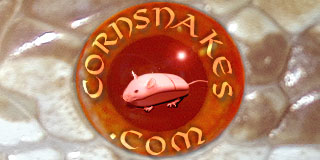From my retired SerpenCo.com website.
Miami Phase Corn Snake
The Miami Phase was a name I coined back in the late '70s from a group of corns I picked up in pet shops in, oddly enough, Miami. But I have to confess, that some of my stock also came out of the Homestead area as well, but I made no effort to segregate them into that specific of a locale. I picked the ones with the most silver gray background color and with red, orange, or maroon colored blotches. This project was intended to produce the Candy Cane corns, but I found the normal colored corns to be very attractive in their own right.
Miami Phase corns tend to be identified primarily by the grayish background coloration, although Miami has it's share of orange colored corns and, as well, gray colored corns can be found all over the rest of the corn snake's range. The most common color seen on the dorsal blotches is red with a slightly orangish tinge to it, but some of the variations with orange blotches can be spectacular looking. Particularly if you can find them with bold black borders around those blotches. Deep red blotches have been produced, but they seem to be in a very small minority. Work is currently being done to see if there is some genetic influence at work controlling the blotch color independently from the total coloration of the animal. It is probably not at all unlikely to assume that this might be the case.
The lateral blotches are most commonly a rich orange coloration, but some individuals have been seen that have a more pinkish colored hue.
Some babies can be problematic feeders as many will insist on green anoles as their first meal or two. Once they have gotten over this hurtle, they will take mice with gusto and none the worse for their earlier indiscretion. But if you intend on breeding and working with any corn snakes that originate from the southeast corner of Florida, you really should be prepared to handle the snakes that demand lizards.
As mentioned earlier, the Miami Phase stock was the base stock used to create the beginnings of the Candy Canes I am working with. A side project that began in 1984 is the Milk Snake Phase corn, which originated from a rather interesting animal and has been selectively bred over the years to try to enhance the contrast and coloration of the Miami Phase as well as enlarge the blotches to saddles or partial rings around the body. An even later combination with the Hypomelanistic gene has resulted in the Crimson Corn, which gives an even greater range of possibilities to work with.
